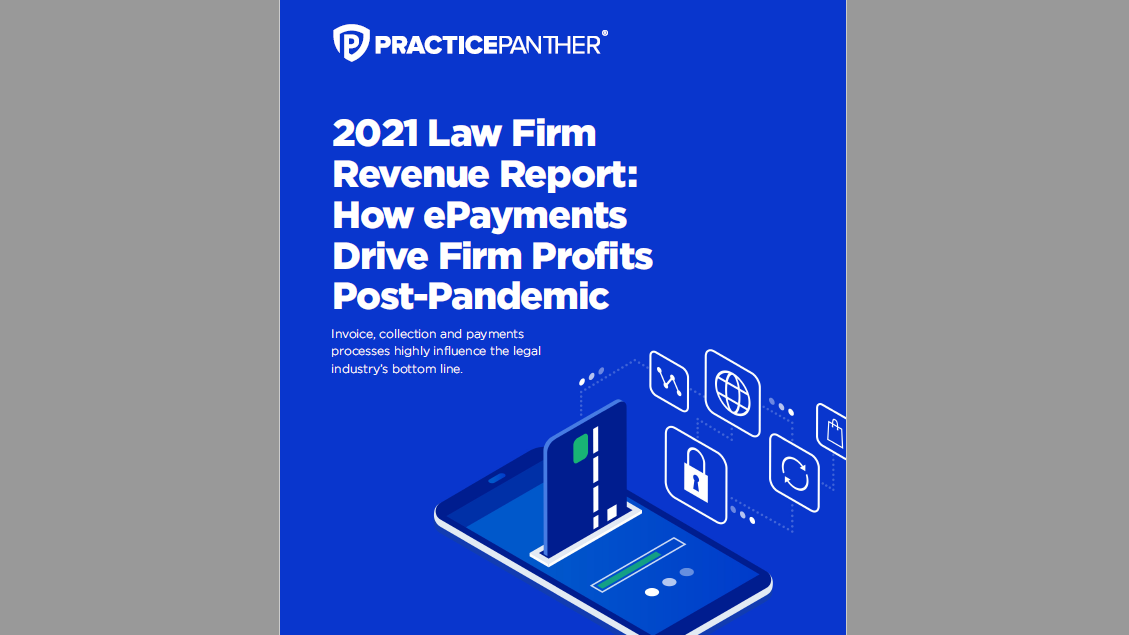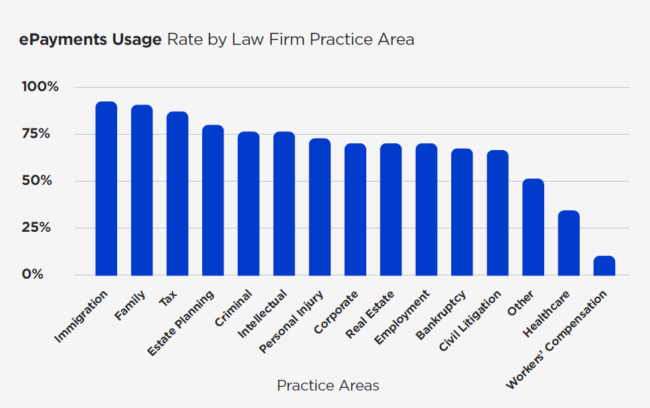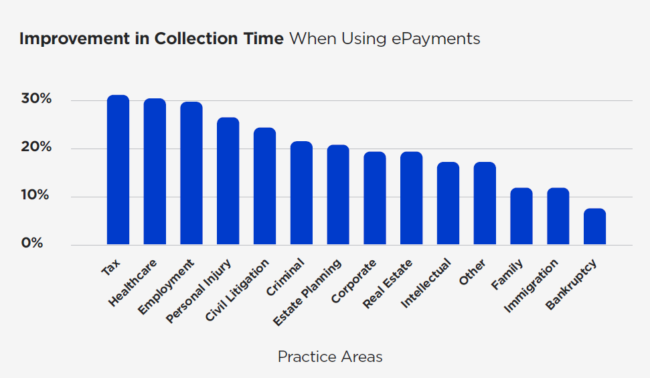Not surprisingly, the pandemic drove greater use of electronic payments across all industries, with the volume of electronic payments up 11.2 % in the first quarter of 2021 over the prior year.
Law firms were no exception to this trend, as they realized that the old way of collecting payments via paper checks was impacting their cash flow, according to a report published today by the practice management platform PracticePanther.
Notably, for law firms that adopted e-payments and offered clients the ability to pay online, the benefits were tangible, the report finds. With e-payments, the time it took firms to collect invoices decreased by 20.4%, and their collections increased by 6.7% during the first quarter of 2021.
“A major contributing factor to how long it takes for a law firm to get paid is the type of payments they require their clients to use,” says the report, 2021 Law Firm Revenue Report: How ePayments Drive Firm Profits Post-Pandemic.
Although ABA ethics guidance has allowed law firms to use credit cards since 1974, many firms were slow to adopt e-payments, the report says. As of 2018, just 62% of large and midsized firms allowed e-payments.
At the same time, consumers overwhelmingly prefer to use digital payment methods. The report cites a recent Visa study finding that 78% of consumers rank digital payments as their top preferred payment option.
Analyzing data from users of the PracticePanther platform, the report finds that use of e-payments varies by practice area. The practice areas that most often used e-payments are immigration, family and tax, while those that least often used them are healthcare and workers’ compensation.
The data further showed that improvements in collection times and collection rates from e-payments occurred across all practice areas, but that the degree of improvement varied by practice area.
For example, collection times improved more than 30% for tax and healthcare lawyers, but just over 10% for family and immigration lawyers.
With regard to collection rates, the practices that saw the greatest increases from adopting e-payments were healthcare (19%), civil litigation (14%) and bankruptcy (9%).
The reason e-payments improve collection times and rates is primarily due to their convenience, the report suggests. Rather than have to write a check and get to a mailbox, the client is able to simply click a link in the invoice and make a payment immediately.
But another reason, says the report, is the ability to automate collection of accounts receivables through automatic invoice reminders.
“Those that utilized an ePayments reminder feature to nudge their client to pay saw an additional 5% decrease in the time to collect their invoice and a 0.5% increase in a collection rate than those who did not send a reminder,” the report says.
Last September, PracticePanther introduced PantherPayments, an all-in-one payment system fully integrated within the PracticePanther platform.
It is based on the Headnote e-payments platform, which PracticePanther’s parent company, Paradigm (formerly ASG LegalTech), acquired in September.
You can download this latest report from PracticePanther.
[Disclosure: PracticePanther and its parent company Paradigm are advertisers on this blog and my LawNext podcast.]
 Robert Ambrogi Blog
Robert Ambrogi Blog

